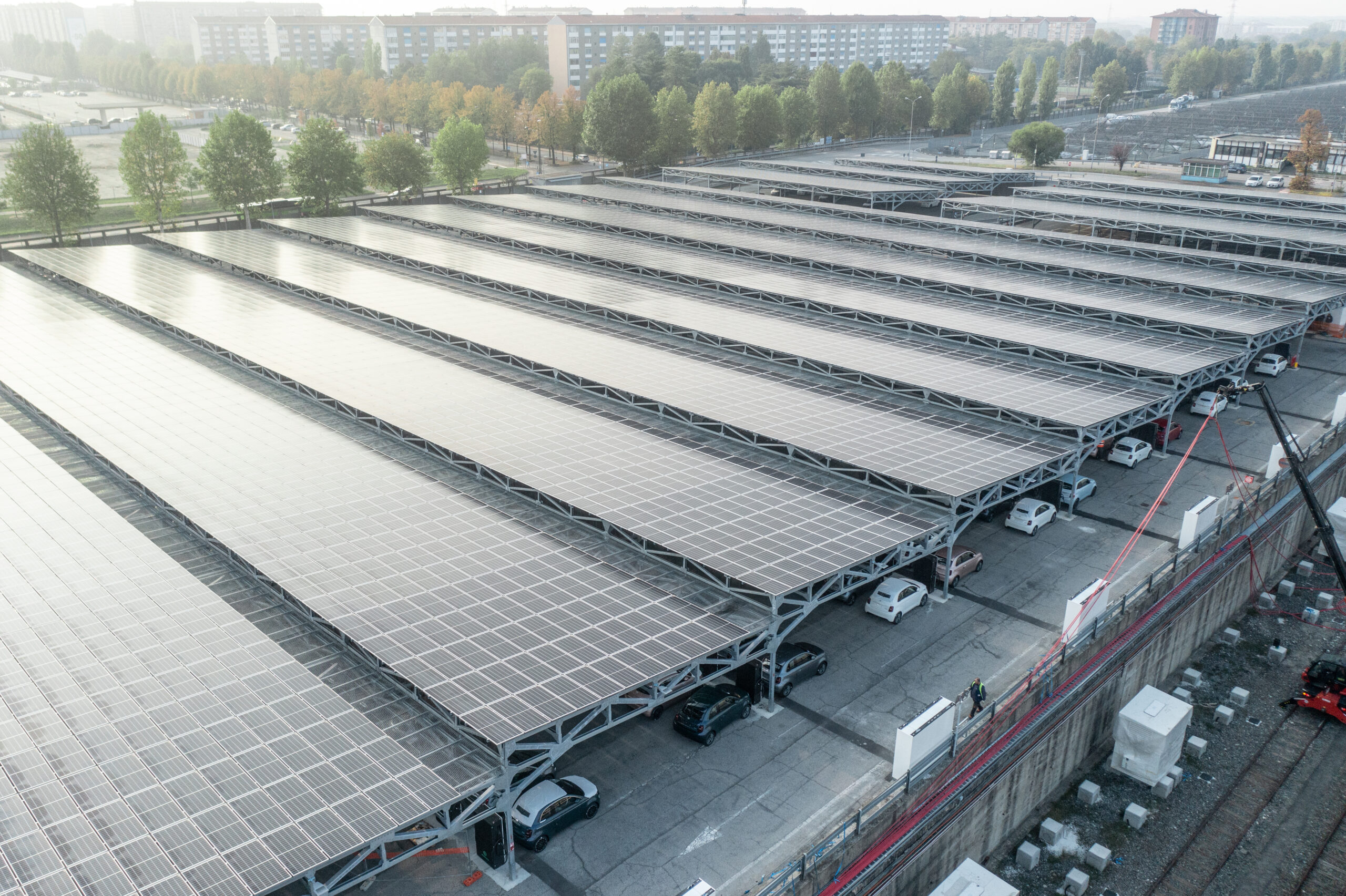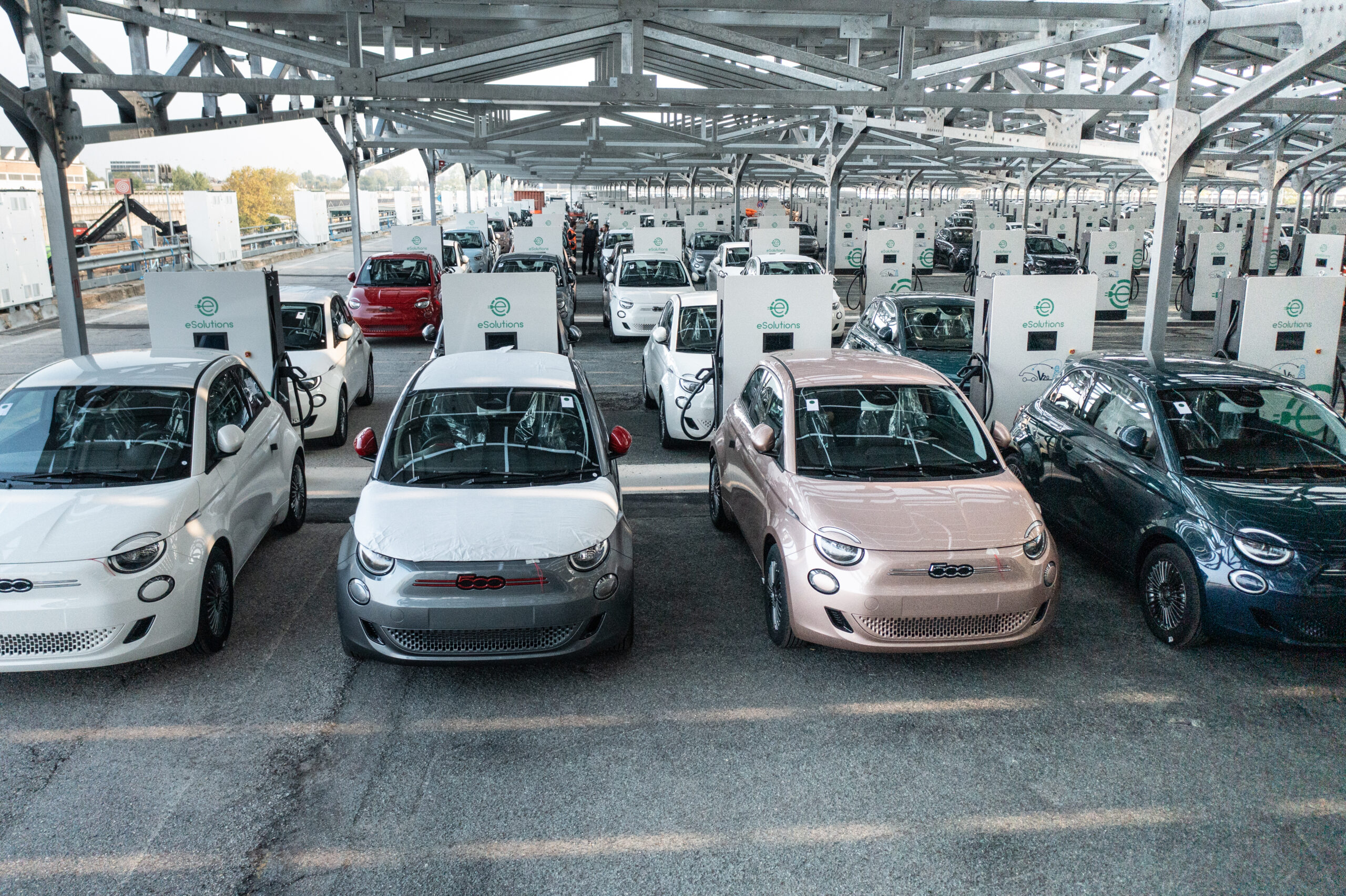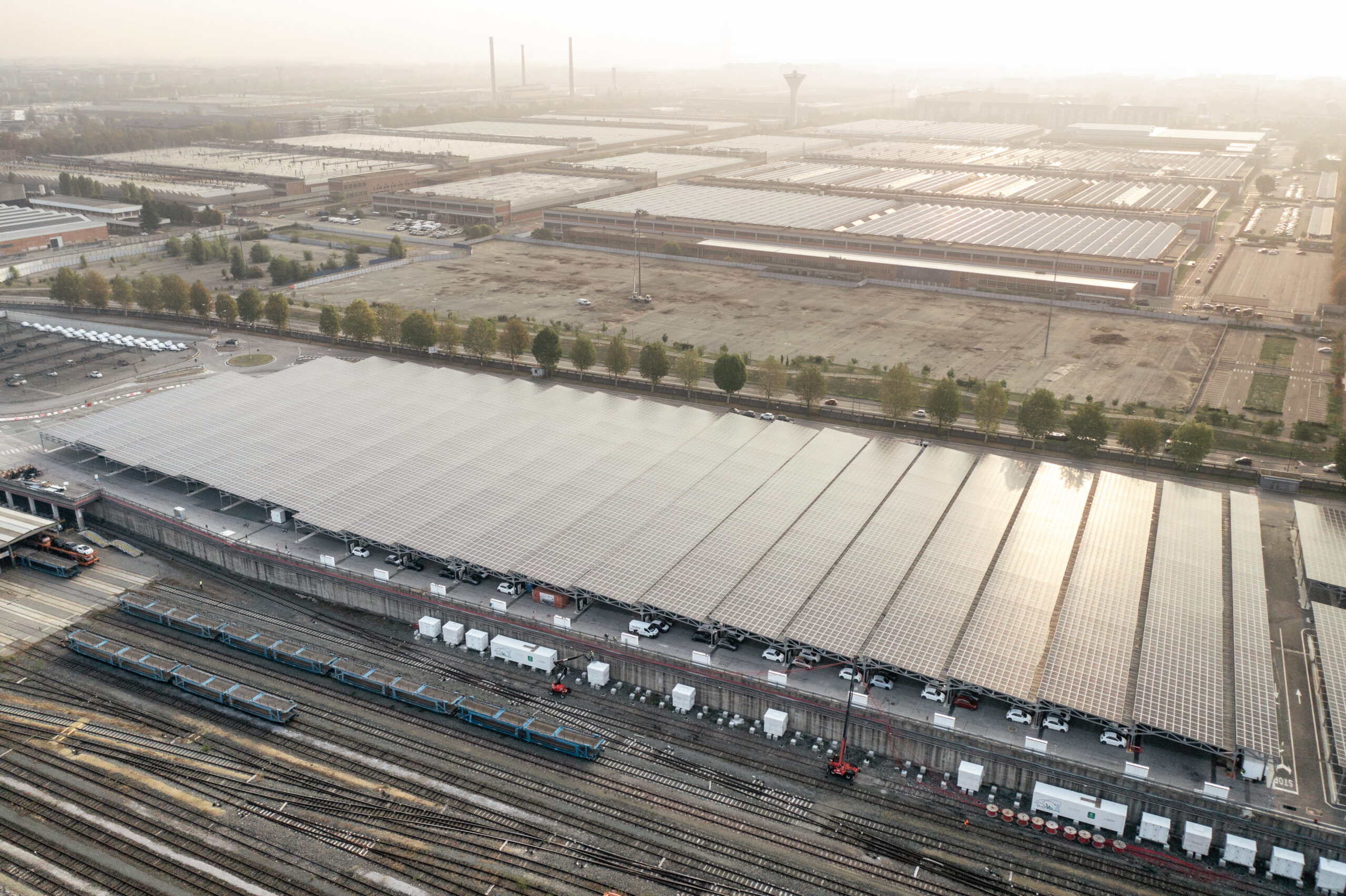DROSSONE V2G PROJECT
The DrossOne V2G Parking Project is a large-scale vehicle-to-grid (V2G) system with integrated energy storage developed with the support of the European Commission’s Innovation Fund. The DrossOne Project is located in Mirafiori, Turin, Italy and is developed by Free2move eSolutions and Stellantis.

DrossOne V2G Parking
GA n ° 101038849 – a project funded by Innovation Fund

The Project
The vehicle-to-grid promotes a change of paradigm that makes EV’s a valuable source of flexibility to the grid.
The project will demonstrate the feasibility of a large-scale centralized V2G charging system by using the stationary storage associated with the electric vehicles (EV) in the car park of Stellantis (before being shipped to car dealerships) and a stationary storage unit based on second-life batteries.
The DrossOne Project will also provide fast reserve ancillary services to the grid operator (such as balancing, frequency and power regulation) as well as real time services by using a system with bidirectional fast chargers.

The Technology
The project is the first commercial large-scale centralized bi-directional V2G of its kind and it is thanks to the innovative technology applied to its hardware, i.e. with the addition of a direct current-direct current (DC-DC) converter.
Software is another key point for innovation thanks to the new aggregating software platform that emulates and controls the fleets as one centralized “energy storage resource” with a single interface to the grid.
Lastly, an innovative business model that generates value from the unused storage capacity of parked EVs, by offering grid stability services to the Italian transmission system operator (TSO).

Contributing to energy transition
DrossOne V2G Parking Project will deliver a nominal capacity of 25MW ultra-fast reserve services between 2023 and 2027 thus contributing to reduce the need from TSOs of fossil-fuel based power plants.
Energy storage and EV fleets can contribute to a more sustainable carbon neutral future, as they will reduce the need for peaking fossil-fuel power plants to deliver ancillary grid services and therefore reduce the GHG emissions linked to these power plants.
Energy storage and EV fleets can contribute to a more sustainable carbon neutral future, as they will reduce the need for peaking fossil-fuel power plants to deliver ancillary grid services and therefore reduce the GHG emissions linked to these power plants.